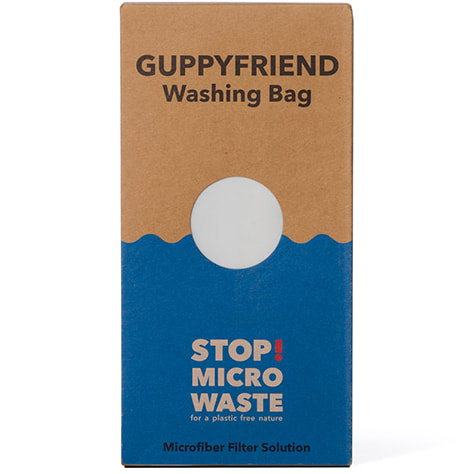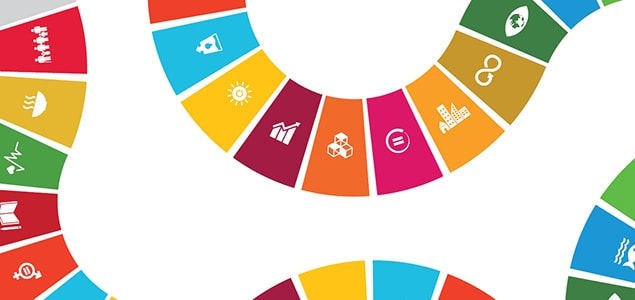|
As of the writing of this article, the year 2020 is a mere 450 days away. Can you believe that? 450 days! For the sustainability community, 2020 is a particularly important date: 2020 Sustainability Goals have become highly fashionable; unless you have been living under a rock, you are familiar with phrases such as “20 percent reduction [insert carbon, energy, waste, water, etc] by 2020.” According to the website Pivot Goals, within the Fortune 250* there are 330 energy, climate or greenhouse gas (GHG) goals with 2020 as the target date. I can attest firsthand to helping dozens of non-Fortune 250 companies create 2020 goals. A quick Google search showed over 15 million search results for the term “2020 Sustainability Goal.” In my role at WAP Sustainability, one of my main tasks is helping organizations measure GHG emissions and make progress towards stated targets. To say I am a GHG emissions geek would be an understatement. To put it in context, I received the Distinguished Alumni Award this year from the Greenhouse Gas Management Institute (GHGMI). My experience in this area tells me: Most organizations are going to fall short of their 2020 goals. Most organizations have not purposely done enough to reduce their footprints by one-fifth. Many have grown, shrunk, pivoted, merged and sold; the baselines established pre-2010 have changed, sometimes radically, and sometimes that change is still unknown. Mechanically and technically speaking, most organizations have significant uncertainty and data gaps in their calculations that make progress toward their 2020 targets hard to even measure. Measurement aside, how organizations are going to talk about their 2020 goals come 2020 is going make for a case study in and of itself. Likely, organizations will be forced to do one of the following:
So, with 450 days to go, what can you do to make sure you know what to do come 2020? If you are in sustainability leadership … Make sure that your carbon-accounting processes to measure your GHG emissions are done correctly. I see many organizations that have been doing the same incorrect emissions calculations for nearly a decade. Sometimes I see that calculations only reflect a portion of the business, and major scope 1 and scope 2 emissions sources are simply left out. These details have to be buttoned up before making public statements about goal performance. Additionally, I would seriously consider having your 2019 inventory looked at by a professional. Make sure the protocol has been followed, make sure the appropriate emission sources are included, and that the inventory and its outputs are ready for communications. Ask yourself if this inventory would hold up to verification or assurance. Time is on your side now, but you only have 450 days. If you are a sustainability marketer or communicator … Start the credibility conversation today. It will be a dark day when the goal deadline has arrived and your organization is reluctant to communicate the results due to concerns over credibility. The implications of misleading investors, shareholders or customers with overstated sustainability performance come 2020 will be a real thing. As a sustainability communicator, getting ahead of the credibility conversation by validating your emissions calculations and performance now is critically important. I see too many organizations that have never questioned the way their data is created, or was created way back when. I hear so much “we use XYZ software,” “we have been doing this for ten years,” “we don’t need any processes and procedures for this.” I also hear, “we had no idea we were so far off,” “why would my predecessor do it that way” and “we have been publishing this data wrong for so many years.” My recommendation: Spend a little money and have your data reviewed. Your organization’s financials get audited for a reason; that same reason applies for these calculations. You have 450 days to make it right. If you are a facility manager or specific topic sustainability leader … Ensuring the accuracy of your organization’s total GHG emissions inventory is a large lift in and of itself, but the micro-aspect of emissions performance is equally important. If you happen to be one of the organizations that actually hit its 20 percent by 2020 target, the most important element of communicating that success is to be able to explain how those reductions actually happened. Detailing how emissions reductions happened is part of the way to build credibility in communicating this massive accomplishment. As facility managers or topic leaders on sustainability, you are the front line for explaining which projects saved how much energy/waste/water/carbon at what ROI, over what period of time. While some will argue these details should be left in minutia, I would argue these details help write the story and build credibility. Additionally, CDP does a great job of helping organizations set context for their reductions. Starting now, prepare a list of accomplishments, performance of projects, ROIs, pictures, charts and beyond to share with communicators and sustainability leadership. In 450 days, this level of data is going to be important. If you are an NGO or advocacy group … As The Beatles famously stated, sometimes we get by with a little help from our friends. As an NGO or advocacy froup, you play a huge role in helping organizations drive towards their stated goals by holding organizations accountable: Ask about performance. Ask how the goals were accomplished. Ask why goals were not achieved. Help sustainability leaders hold their organizations accountable. With 450 days until 2020, it’s never too early to start advocating for organizations to hit their stated goals. At the end of the day, we all want to have success in driving organizations towards more sustainable performance. Sometimes stated goals and aspirations outpace the technical and mechanical rigor of calculating, reporting and managing emission performance. With some small changes, most organizations can spend the next 450 days making sure their 2020 Sustainability Goals are not forgotten. *According to Pivot Goals, 385 companies have been evaluated, including the Fortune 250 past and present.
3 Comments
I mange tilfeller ganske så unyttig vil jeg påstå. Når PWC sin ferske Bærekraftrapport; «Bærekraft 100» viser at 88% av selskapene de har kartlagt rapporterer på tallfestede resultater for bærekraft, men samtidig har kun 52% konkrete mål for bærekraft og samfunnsansvar, da er mitt poeng åpenbart. Å rapporterer for rapportens skyld er vel og bra, men flytter det noe som helst? Gjør det virksomheter mer skikket for fremtiden slik at forretningsmål nås og verdier skapes? Eller sier rapportene i beste fall noe om det som har skjedd det siste året og at virksomheten ikke har gjort noe galt?
Ikke slutt med rapportering-men gjør det relevant Ikke slutt og rapporter, men slutt å rapporter på det som ikke er viktig for din virksomhet. Det finnes en rekke rapporteringsverktøy og det er bra, men hva er viktig for din virksomhet? Gjør jobben skikkelig, sett mål og jobb for å nå dem. Bærekraft er ikke noe ved siden av forretningsstrategien, det handler om hvordan du driver din virksomhet ikke bare for å skape verdier for aksjonærene, men også bidrar til verdiskapning i det samfunnet virksomheten opererer i. Sett klare mål Bærekraftsmålene er et godt egnet rammeverket og mange virksomheter har tatt de i bruk. PWC s rapport viser til at over 40% av de 100 største selskapene i Norge prioriterer ett eller flere av bærekraftsmålene i sitt arbeid. Rapporten viser også til en positiv trend; «selskapene i årets rapport er langt mer bevisste FNs bærekraftsmål og sin egen rolle i å vise ansvarlighet og promoterer bærekraftig verdiskaping». Rapport fra KPMG viser til tall hvor over 40% av de 250 største virksomhetene i verden gjør det samme. Begge rapporter påpeker at konkretisering av mål for eget arbeid ikke er på plass hos alle. I en fersk Dansk rapport indikerer syv av ti av Akademiet for de Tekniske Videnskabers medlemmer at de benytter bærekraftsmålene i deres daglige arbeid, så kanskje det er danskene som ligger lengst fremme her? Bruk gjerne bærekraftsmålene Uansett, det fine med FNs bærekraftsmål er at de er konkrete og målbare. De består av 193 delmål og en rekke indikatorer. Som både kartlegging i Norge og Globalt viser, benytter mange både i privat næringsliv og det offentlige bærekraftsmålene og delmålene for å sette egne mål, mål som bidrar til at virksomheten er en del av den fremtidige løsningen. Oppfordring Min oppfordring er sett relevante mål for bærekraftig utvikling av egen virksomheten, mål fremgang og rapporter på status. Ikke rapporter for rapporteringens skyld, men for å bli skikket for fremtiden og ta del i verdiskapningen. Lykke til med rapporteringen! (Oslo, August 30th, 2018) – H&M announces two sustainable news: The launch of a new concept – H&M Take Care – consisting of products, guidance and services that will help customers refresh, repair and remake garments, shoes and accessories. In relation to this, H&M will invest in the Norwegian start-up company Repairable, which will be a part of the Take Care concept, and repair clothing and shoes. The news will be launched September 26th with a pop-up store in H&M Bogstadveien. Repairable unites the digital everyday life with solid craftmanship. The idea came about when entrepreneur Ingvill Kerob realized there just wasn’t enough hours of the day to patch her children’s worn out clothes. She would also like her children to know the value of taking care of clothes and shoes. "Repairable is a new digital service that will make it easier to repair clothing and shoes. We are working with skilled tailors and shoemakers to help people take care of what they have. In this way, everyone can contribute to sustainable fashion, as well as local workplaces. To be able to offer our services at H&M is a milestone, as they’re one of the world’s largest fashion companies. You can drop off all kinds of clothing and shoes in the store – not just H&M products", says Kerob. Repairable has predefined prices on everything from repairing holes, changing zippers or hemming trousers (shortening the length). Their vision is that repairing your clothes will be a matter of course. New sustainable business models Norway is the third market in the world launching H&M Take Care, after Germany and France. Luisa Book, Sustainability Manager at H&M Norway, points out that Norwegians are conscious. She also explains that innovation is crucial for a more sustainable fashion future. "We know that Norwegians are environmentally conscious consumers and are therefore thrilled to launch this concept locally. Just like our customers, we love fashion, and as a complement to our garment collecting, we’re launching H&M Take Care to encourage and inspire them to extend the life of their fashion favorites. This is a great example of how we change our business model for a more sustainable future. We are particularly proud of the fact that we support and invest in sustainable, Norwegian innovation", says Book. Laundry bags that collect micro plastics and wipes to make sneakers clean again The H&M Take Care concept is divided into three categories:
Image credit: Metsä As more businesses make moves to align their operations and strategies with the Sustainable Development Goals (SDGs), the need for a common framework for reporting on the impacts and contributions of companies to the SDGs becomes more apparent. Developed by GRI and the United Nations Global Compact, with the support of PwC, as part of a three-year initiative established to encourage and assist corporate reporting on the SDGs, Business Reporting on the SDGs: An Analysis of the Goals and Targets aligns with companies’ regular reporting cycles as they work towards their SDG objectives. Launched at the UN Global Compact Leaders Summit 2017 during the UN General Assembly in New York, the report provides an inventory of possible disclosures per SDG at target level and is a first step towards a harmonized set of indicators and methodology for business to report on. A follow up document, A Practical Guide to Defining Priorities and Reporting, will be published in January 2018 and will offer a structured approach to help businesses prioritize and report on relevant targets, using the Analysis to drive action. Thousands of companies already use the GRI Sustainability Reporting Standards in their sustainability reporting and 75 percent of businesses participating in the UN Global Compact initiative have confirmed their intention to contribute to the SDGs in 2017. With investors increasingly interested in directing funds towards businesses that are leading the on responsible business practices, transparent and effective reporting has never been more vital. The Business and Sustainable Development Commission estimates that delivering on the SDGs could generate up to $12 trillion in revenues and savings as a result of new opportunities and efficiency gains. “The SDGs provide a unique opportunity to elevate communication on sustainability. The expectations on companies are huge. The UN Global Compact, the world’s largest corporate sustainability initiative, and GRI, the world’s leading organization for sustainability reporting, are very excited to take up this challenge,” said Lise Kingo, CEO and Executive Director of the UN Global Compact. “Our ambition is for business to use only one common standard for reporting on their performance on the SDGs, in line with the Ten Principles of the UN Global Compact.” There is currently no single methodology for measuring and reporting business progress and impacts on the SDGs. The Analysis and Practical Guide will pave the way for the development of a single mechanism and set of indicators, as well as the aggregation of relevant data across companies, enabling stakeholders to compare company information. They will also help businesses to better engage and communicate their contributions to the SDGs with governments and inform their sustainability reporting at a national level. The three organizations consulted with representatives from more than 70 stakeholders, including over 35 leading businesses across the globe, to inform the analysis. “The SDGs have ushered in a new era of global development objectives aimed at addressing the world’s most pressing problems from job creation and education to social and health protection while tackling climate change and environmental protection,” said Malcolm Preston, Global Sustainability Leader at PwC. “But while it’s widely acknowledged that active participation from business is key for achieving the SDGs, no common practice for corporate reporting had been established. Transparency is becoming a basic requirement for conducting business and we’re proud to have played a pivotal role in this groundbreaking research and international stakeholder engagement. It not only contributes to a common SDG language, but will help direct innovation, strategic leadership and capital towards achieving these vital goals.” 
Author This article was originally posted on www.SustainableBrands.com. Sustainable Brands is the leading global community of business innovators working to shape the future of commerce world wide, and a content partner of S-HUB. We are on the lookout for members who want to take on an active role in building S-HUB.Most roles are part time - some more involved than others - and our team works in a flexible environment, often outside regular business hours. We are an organization under development and there is a variety of ways you can get involved supporting our team. We mainly want to put our list of needs out there for you to see if any of it sounds exciting to you, and whether our needs match your skill-set. Our current needs:
Other possible projects you could contribute to:
Did anything on this list call your name? We want to hear from you! Send an email at [email protected] with your thoughts and our team will follow up and share more specifics. |
NEWSLETTER
Subscribe to our newsletter to get the sustainability articles sent to you every month. |
|
Follow Us
Contact Us
|
Want to learn more? |










